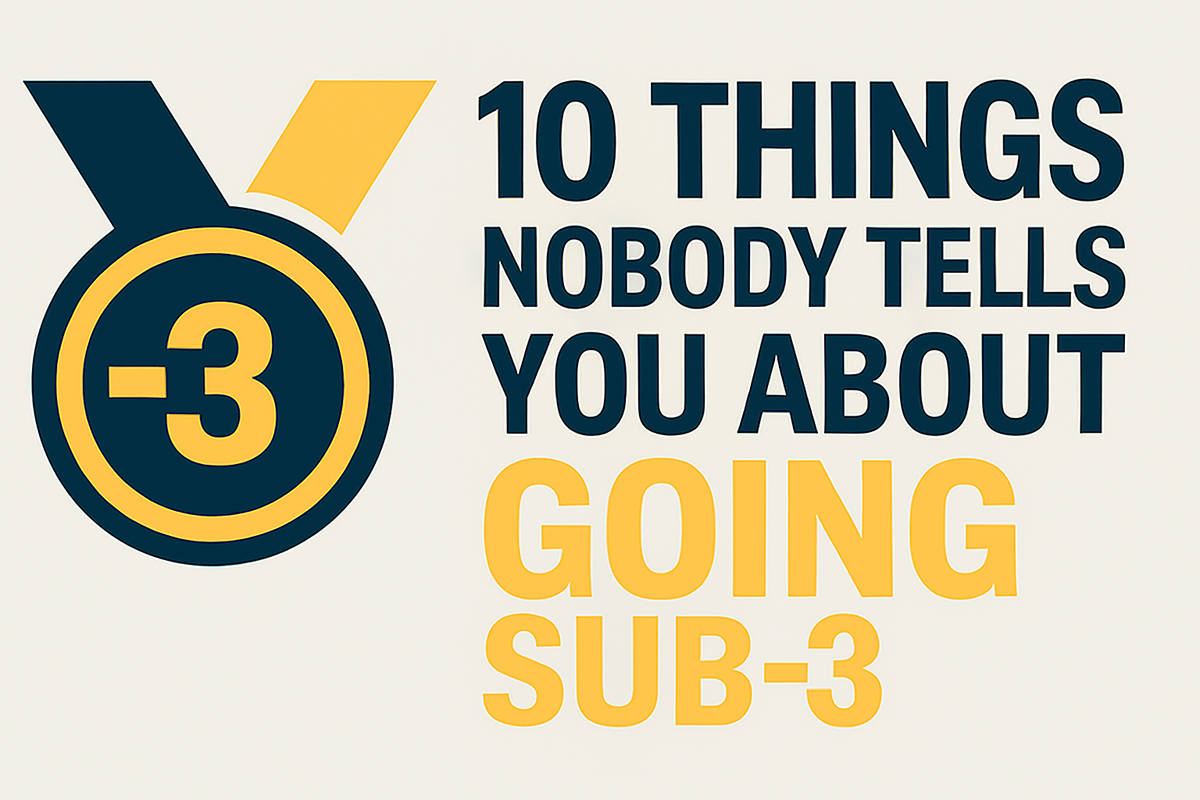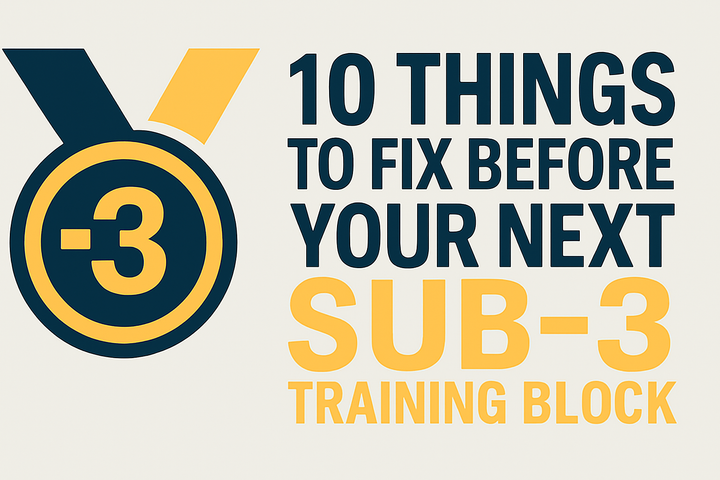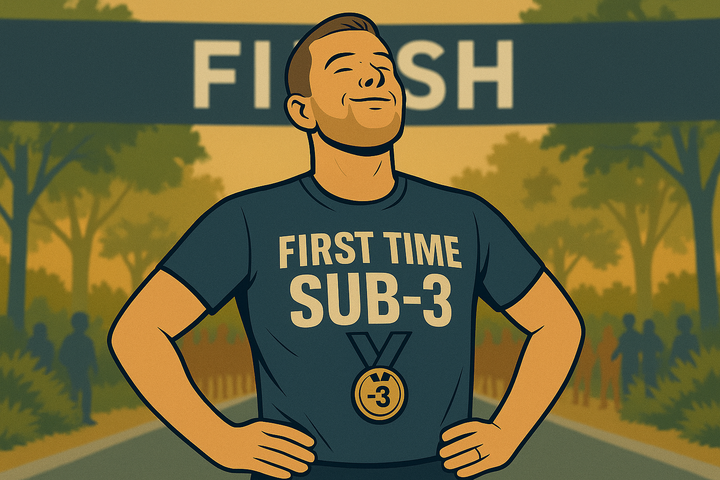10 things nobody tells you about going sub-3
You’ve heard about the pace, the pain and the payoff. But these are the quiet truths most runners only discover once they’re deep into the journey.

Most advice about going sub-3 focuses on paces, plans and fuelling. And rightly so. You’ll need all of those. But there’s another side to the process — not tactical, not physical, but personal. These aren’t tips, they’re quiet truths. The sort of things that creep up on you as the block progresses. They don’t show up in spreadsheets, but they shape the experience every bit as much as your long runs and intervals.
If you’re chasing sub-3, you’ll likely recognise a few of these already. If not, you will soon.
1. You’ll feel slow - even when you're getting faster
Heavy legs. Unimpressive splits. That bloody annoying Garmin message: “Detraining.” And, on easy days, you’ll be overtaken by runners who’d struggle to break 25 minutes for 5K. It’s a blow to the ego, but this is how it works - the best training blocks don’t always feel amazing. You have to trust the process, your body knows what it’s doing far more than you may think.
2. You’ll have to let people down
Sub-3 training takes time. It’ll mean saying no - to friends, to family, to things you’d genuinely like to do. And you’ll sometimes feel selfish. But there’s no shortcut here. For a few weeks, the block has to come first. Just remember: it’s not forever. You can repay them later, and you will. But for now, hold your ground. Protect the block.
3. No one will really get it
Unless they’re chasing it themselves, most people won’t understand what sub-3 means. They might ask why you’re so tired, or why you’re running so much. And when you finally do it, their reaction may be underwhelming. That’s fine. You’re not doing this for likes or applause. You’re doing it because it matters to you, and you want to realise your running potential.
4. You’ll start noticing legs
You’ll spot someone’s stride from 100 metres away and know if they’re efficient — or just surviving. You’ll glance at trainers mid-run, and quietly assess form, cadence, intent. You’ll clock the wear on your own shoes and start drawing conclusions. You’ll approximate someone’s 5K time within seconds of seeing them. Welcome to the sub-3 brain — always observing, always calculating, always competitive.
5. You’ll miss the grind once it’s gone
Structure simplifies things. You know what’s coming, and you get on with it. But when the block ends, that structure disappears. You get your evenings back, but feel a nagging sense that something’s missing. Getting up after sunrise feels lazy. The taper is your first glimpse of this — it breaks your routines, messes with your rhythm and makes you doubt everything. After the race, it’s even worse - you couldn't physically return yet, even if you long to.
6. You’ll be sharp - and fragile
Peak fitness is real, but it doesn’t last. You’re running well, your engine is humming, but your immune system is flirting with collapse and your body is one bad session away from injury. This is not the time to go chasing PBs at every distance, although you may be surprised. You’re building to one effort, one "A" race. Don’t burn it early.
7. You’ll run on routine, not hype
Motivation won’t always be there. What gets you out the door consistently isn’t willpower — it’s rhythm. Kit laid out. Shoes by the door. Run at the same time, in the same way. That routine becomes your metronome. It pulls you through the block whether you feel like it or not. Put your head down and do the work.
8. Your best moments may go unnoticed - except by you
The big shifts won’t always come during a race. They’ll come on an early morning tempo when something just clicks. They’ll come during a midweek long run when marathon pace suddenly feels smooth. No one else will see it. But you will — and you’ll know you’re on track. Your VO2 max might jump, and it’ll give you a lift. But the real change will be in the steady, almost hidden ways your body shows you it’s adapting.
9. Mileage won’t cover a bad diet
It’s easy to think that running 100km+ a week gives you a free pass to eat whatever you like. It doesn’t. You can still put on fat during a block. Many do. And plenty of runners underfuel the very nutrients that matter — especially protein. If you want to run well, recover fast and stay lean, you need to eat well. Cut the excess, fuel the work and focus on body composition — not just weight.
10. Sub-3 won’t satisfy you for long
It’ll be a huge moment. You’ll cross the line, hit your watch, and feel something shift. The kudos will roll in — from your club, from Strava, maybe even from people who never usually comment. But, soon, a different voice will start to speak. What else is possible? Could I go faster? Could I do it again? Only you can decide if you have what it takes to find out.
Going sub-3 isn’t just about pace. It’s about learning how to manage fatigue, protect your focus and think long term. The more of these truths you can accept early on, the more likely you are to weather the storm when the block gets hard. Because it will get hard. If it didn’t, sub-3 wouldn’t be worth chasing. There are no shortcuts.
Enjoyed this article? Help keep Sub-3 running — support us with a coffee.
To help fund the running of the site, Sub-3 is an Amazon Associate and earns from qualifying purchases. We only recommend gear or kit that has genuinely helped in our own running and that we believe is worth considering.



